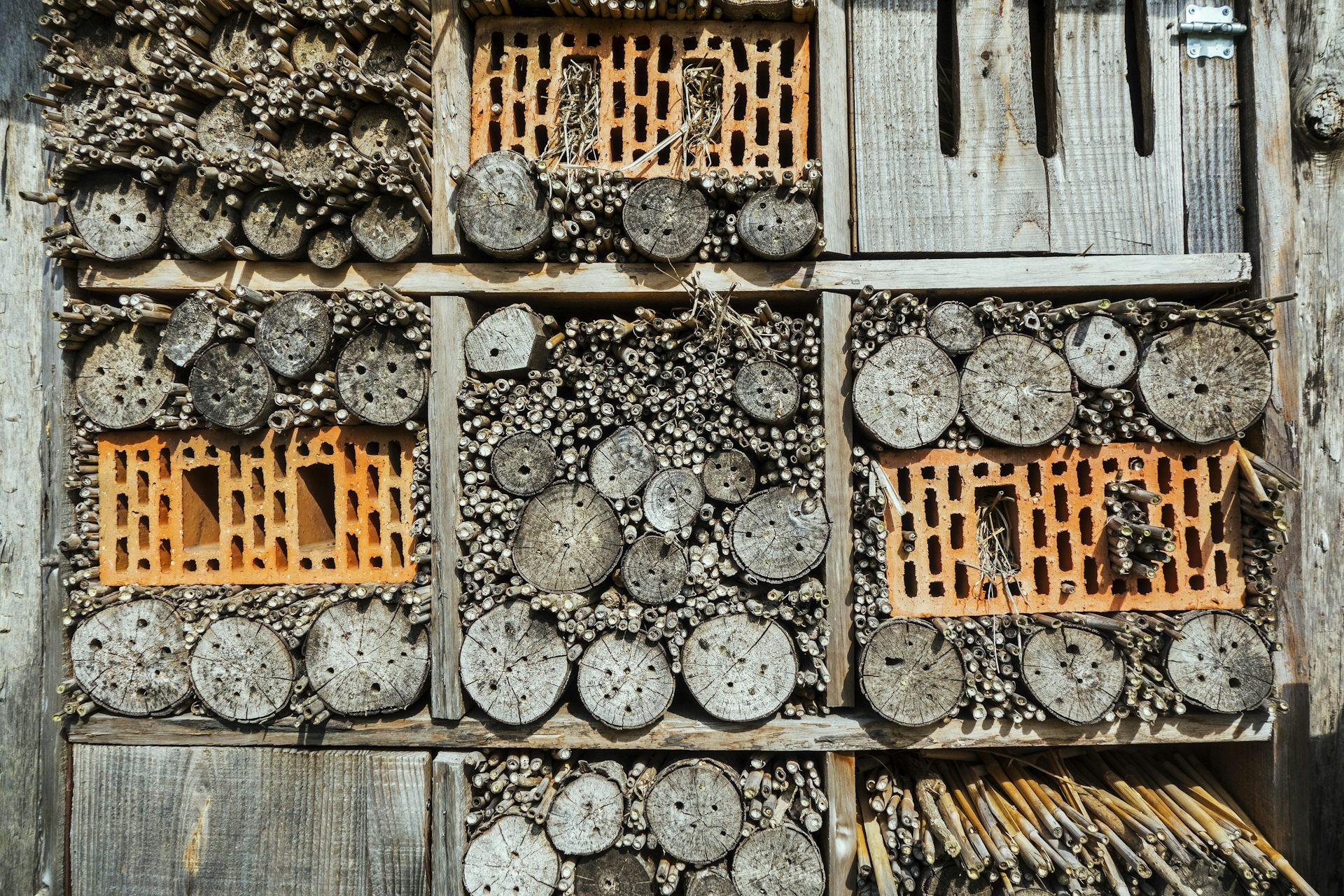Bees, essential pollinators responsible for a third of our food supply, possess remarkable learning abilities. While their brains are tiny, about the size of a poppy seed, they are capable of complex behaviors like navigation, communication, and even problem-solving. But How Do Bees Learn? Let’s delve into the fascinating world of bee intelligence.
Beyond Hives and Honey: Diverse Bee Lifestyles
Contrary to popular belief, not all bees live in hives or produce honey. Only about 10% of bee species are social, residing in colonies with a queen. The majority lead solitary lives, nesting in the ground or utilizing abandoned burrows. Some are even cleptoparasites, laying their eggs in other bees’ nests, much like cowbirds. A small subset, known as vulture bees, have adapted to survive on carrion, thanks to unique gut bacteria.
 Wood cubes filled with twigs and bricks.
Wood cubes filled with twigs and bricks.
Bee Brains: Small but Mighty
Bees exhibit impressive cognitive abilities. Research suggests they likely feel pain, recognize patterns and odors, and can even distinguish human faces. They demonstrate problem-solving skills by navigating mazes and using simple tools. Studies indicate self-awareness and potentially even a rudimentary form of consciousness. During their 6-10 hours of daily sleep, bees consolidate memories within their million-neuron brains, and there’s even speculation they might dream.
A World of Sensory Differences: How Bees Perceive Their Surroundings
Bees experience the world through senses vastly different from ours. While humans see in red, green, and blue, bees perceive green, blue, and ultraviolet light. This allows them to detect hidden ultraviolet patterns on flowers, guiding them to nectar sources. Although their vision is less sharp than humans’, their high flicker-fusion frequency enables them to spot color changes from a distance while flying, something we wouldn’t perceive.
Bees perceive ultraviolet patterns on flowers, invisible to humans, that guide them to nectar.
Bees also possess an extraordinary sense of smell, 100 times more sensitive than ours. This has led to their use in detecting chemicals associated with diseases like cancer and diabetes, and even explosives. Their sense of touch is highly developed, enabling them to feel minute textures on flower petals. While largely deaf to airborne sounds, they are sensitive to vibrations.
Learning by Observation: The Power of Social Learning
Bees are adept problem solvers, evidenced by their ability to navigate mazes and adapt to physical challenges. Remarkably, they exhibit social learning, observing and mimicking the behavior of others. In experiments, bumblebees learned to pull a string to access a hidden food reward. Other bees, observing this action, subsequently replicated the behavior, demonstrating the transmission of knowledge within a bee community.
Buzz Pollination: A Vibrant Learning Process
Beyond basic pollination, where pollen is transferred between flowers, some bees utilize a specialized technique called buzz pollination. This involves vibrating their flight muscles at high frequencies to release pollen from specific flower structures. Bumblebees, for instance, employ this method on plants like tomatoes, blueberries, and cranberries. This intricate behavior highlights the complex learning and adaptation involved in bee foraging.
Bumblebees use buzz pollination to release pollen from specific flowers.
Conclusion: The Remarkable Learning Capacity of Bees
From navigating complex environments to mastering intricate pollination techniques, bees demonstrate remarkable learning abilities. Their sensory perceptions, social learning skills, and problem-solving prowess highlight the sophisticated intelligence packed into their tiny brains. Understanding how bees learn provides valuable insights into the fascinating world of these essential pollinators.